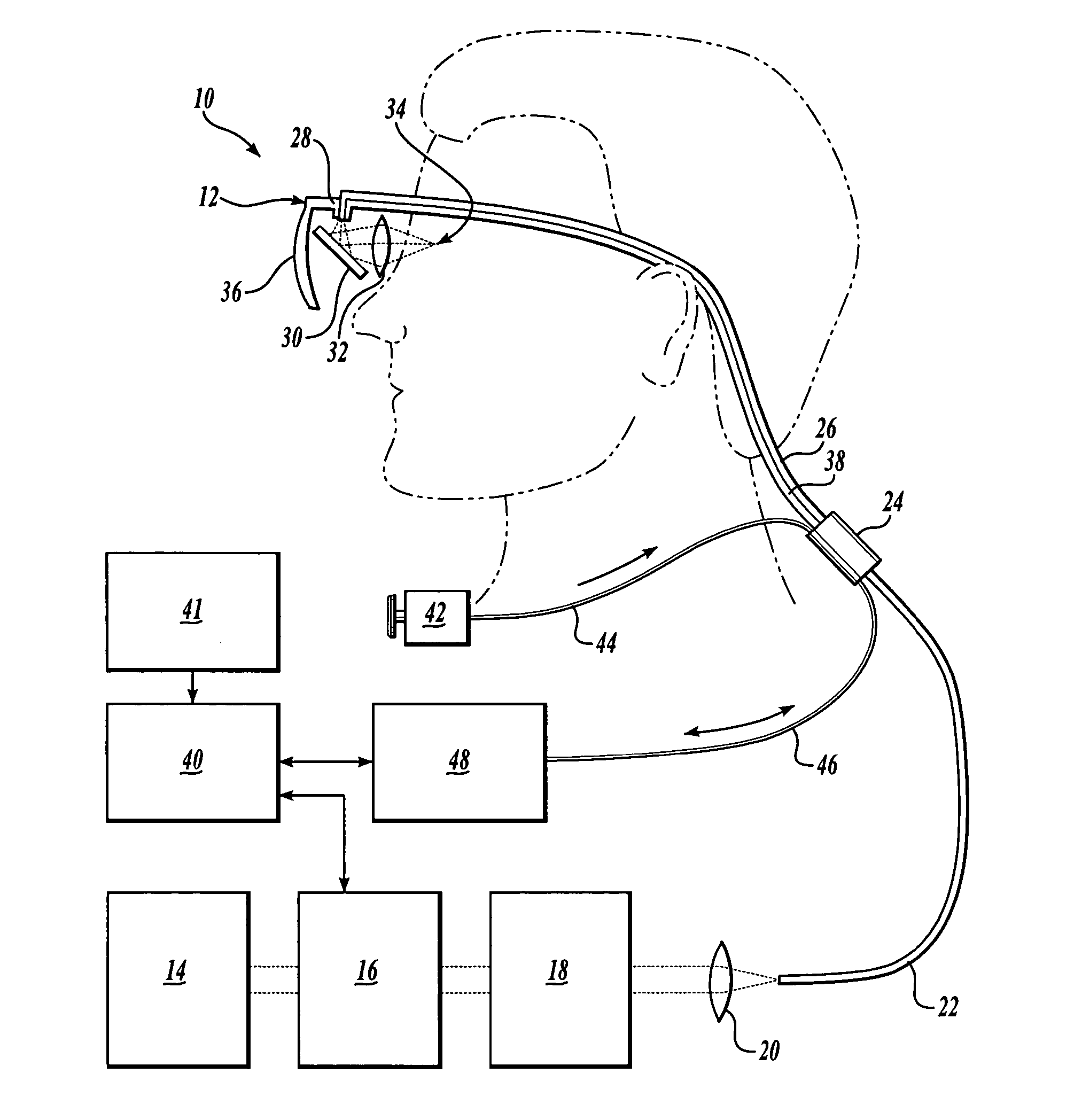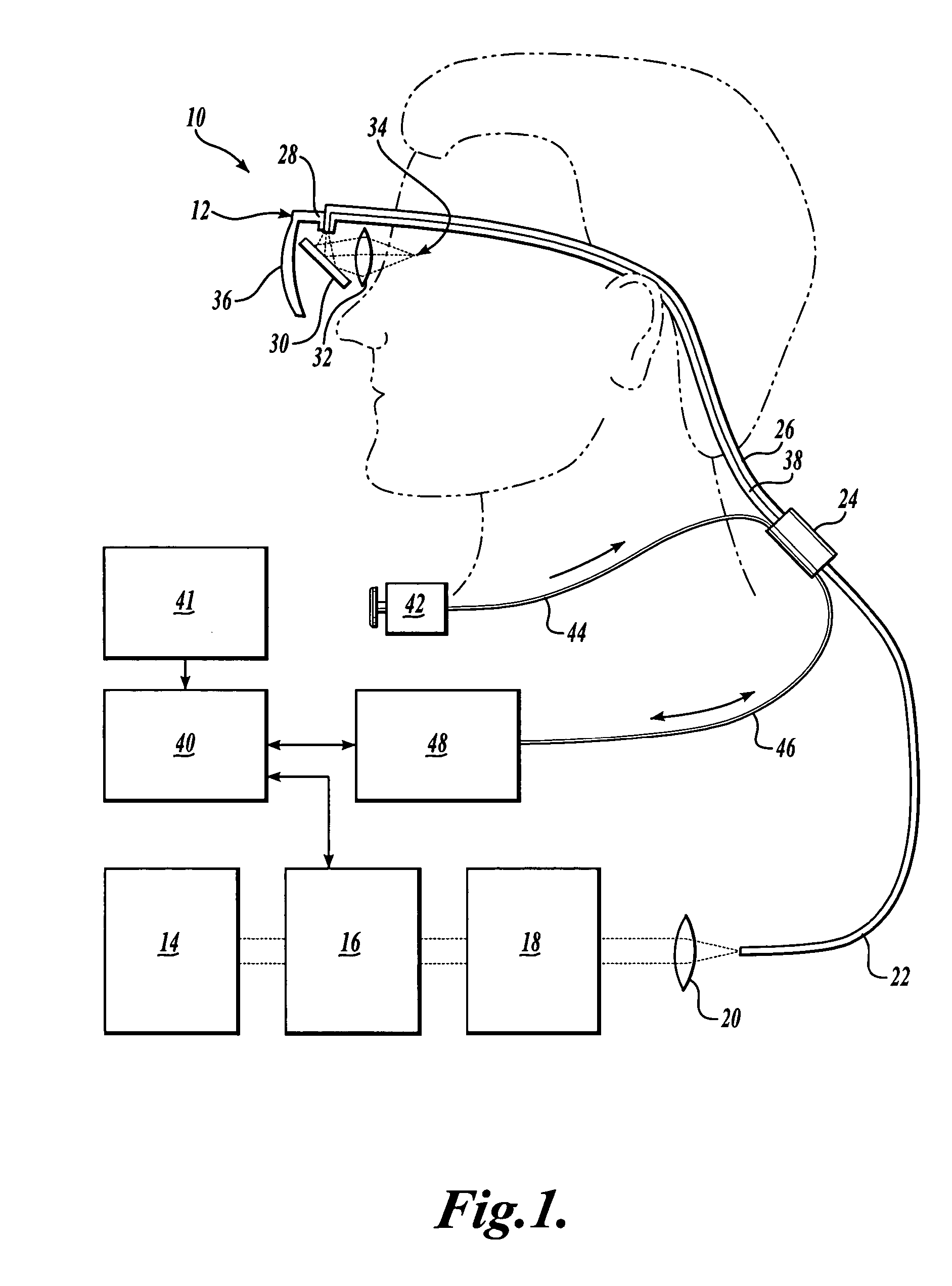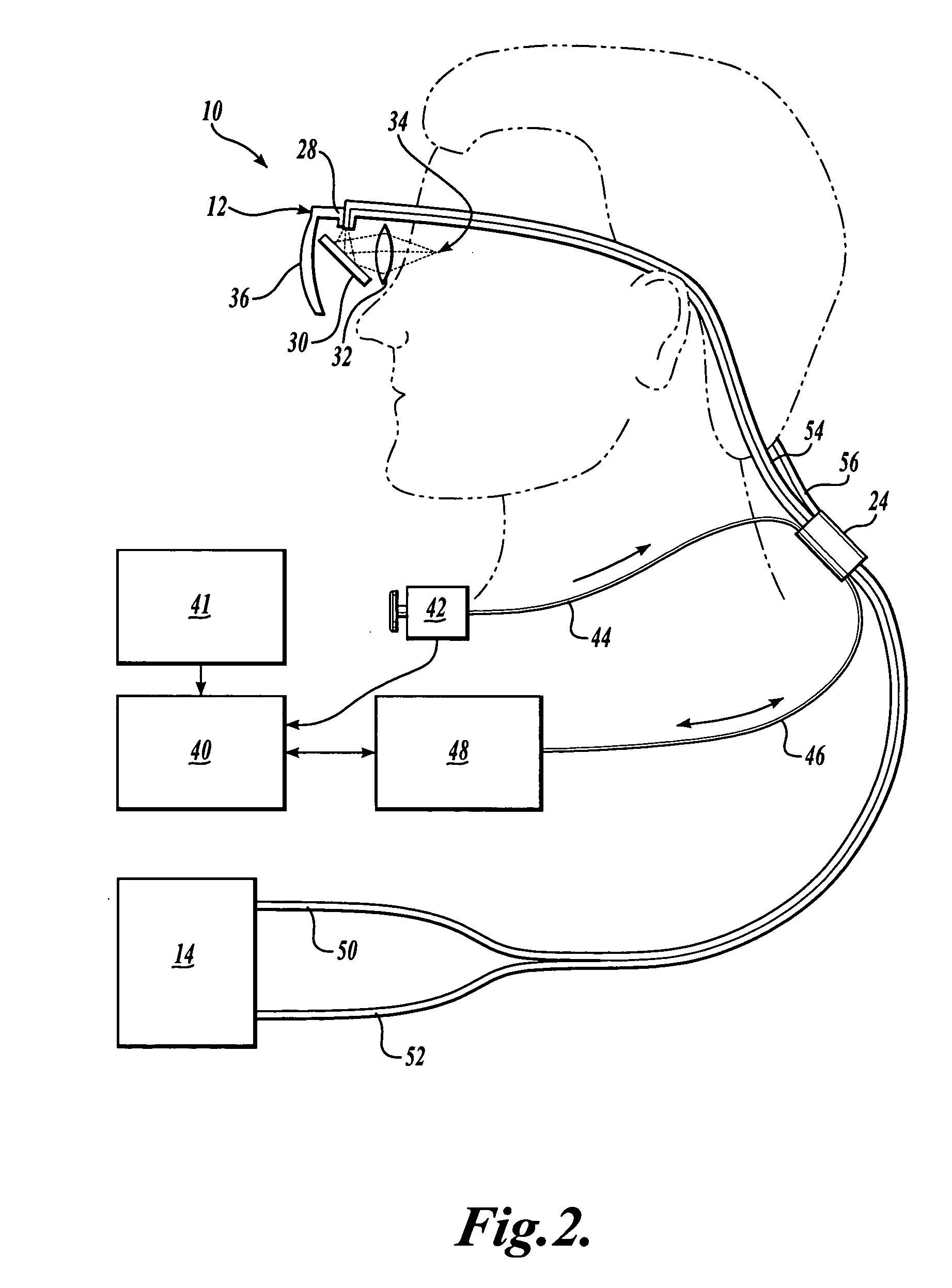Scanning laser device and methods of use
a laser device and scanning laser technology, applied in the field of scanning laser devices, can solve the problems of laser eye injuries that destroy the retinal pigmented epithelium and light-sensitive photoreceptors, and the loss of night vision, so as to promote the health and survival of the retina
- Summary
- Abstract
- Description
- Claims
- Application Information
AI Technical Summary
Benefits of technology
Problems solved by technology
Method used
Image
Examples
example 1
[0073] This Example describes the optoporation of ganglion cells in embryonic chicken retinas using near-infrared irradiation.
[0074] Extraction of Chicken Embryos: Embryonic chicken retinal explants were used for all experiments. Eggs were kept in an incubator until immediately prior to use. The contents of each egg were transferred to a Petri dish where the embryo was separated from the rest of the egg contents using sterile forceps. The embryo was then transferred to a separate dish containing Hank's Buffered Saline Solution (HBSS). During the separation and transfer stages, the embryo was shoveled about, rather than pinched with the forceps. This process was repeated until the proper number of embryos had been collected.
[0075] Once all of the embryos had been extracted, they were viewed under a dissection scope to determine their stage using a staging manual. The stage of the embryos varied from experiment to experiment but were always in the range of stage 29 to 41.
[0076] Dis...
PUM
 Login to View More
Login to View More Abstract
Description
Claims
Application Information
 Login to View More
Login to View More - R&D
- Intellectual Property
- Life Sciences
- Materials
- Tech Scout
- Unparalleled Data Quality
- Higher Quality Content
- 60% Fewer Hallucinations
Browse by: Latest US Patents, China's latest patents, Technical Efficacy Thesaurus, Application Domain, Technology Topic, Popular Technical Reports.
© 2025 PatSnap. All rights reserved.Legal|Privacy policy|Modern Slavery Act Transparency Statement|Sitemap|About US| Contact US: help@patsnap.com



